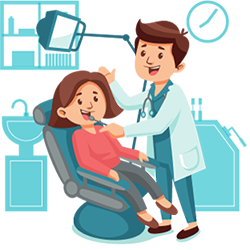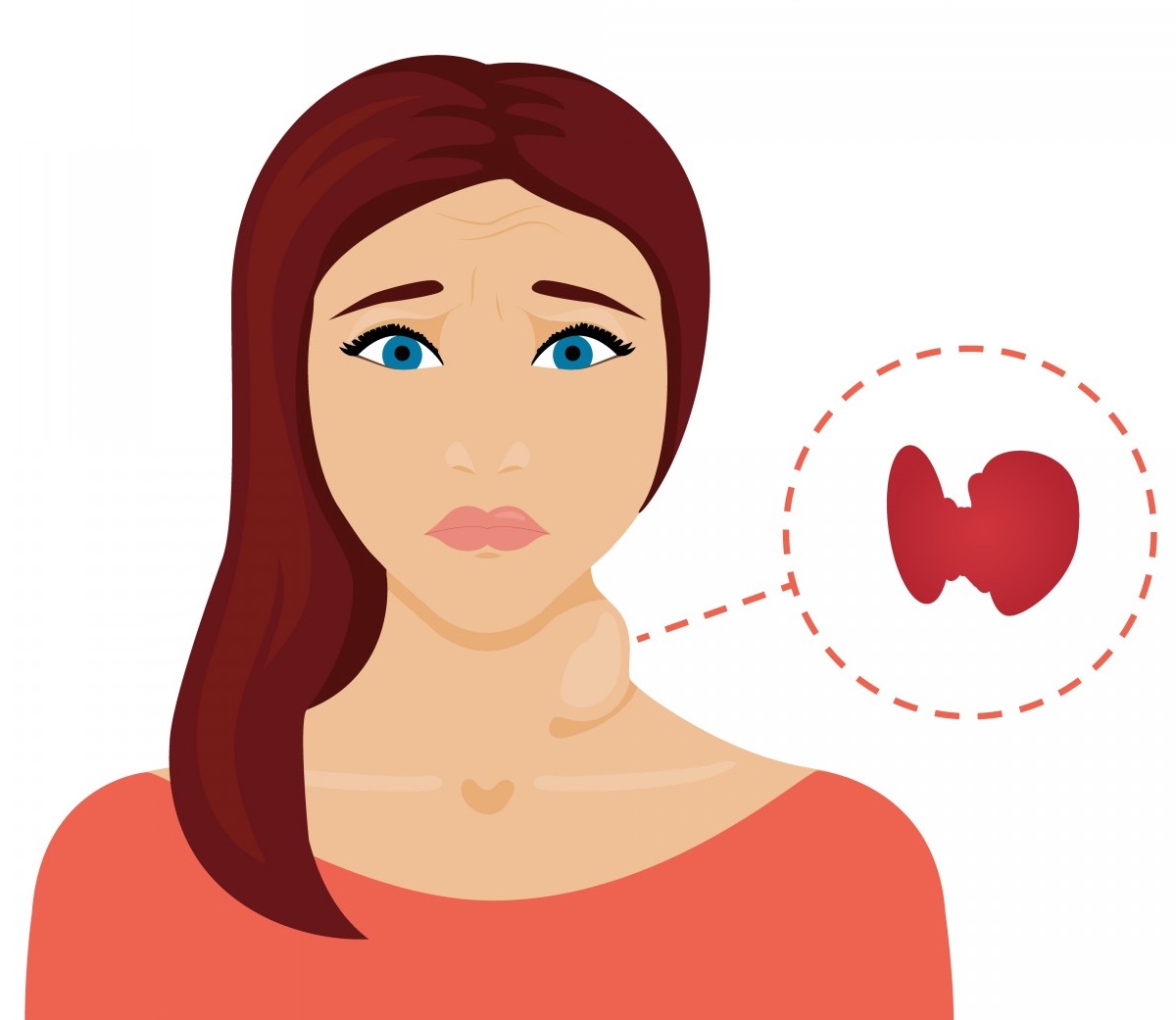

A raised level of thyroid hormone is called as hyperthyroidism. It has various causes but Graves’ disease is the most common cause. Hyperthyroidism can produce various symptoms. Thyroxine is a body chemical (hormone) made by the thyroid gland. It is carried around the body in the bloodstream. It helps to keep the body’s functions (the metabolism) working at the correct pace. Many cells and tissues in the body need thyroxine to keep them going correctly.
In an overactive thyroid gland, your thyroid gland makes too much thyroxine. The extra thyroxine causes many of your body’s functions to speed up. (In contrast, if you have hypothyroidism, you make too little thyroxine; this causes many of the body’s functions to slow down.) Thyrotoxicosis is a term that may be used by doctors instead of hyperthyroidism. The two terms mean much the same.
Talk to your doctor if you are experiencing any of these issues.
Many conditions can cause hyperthyroidism, including Graves’ disease, toxic adenoma, Plummer’s disease (toxic multinodular goiter) and thyroiditis. Your thyroid is a butterfly-shaped gland situated at the base of your neck, just below your Adam’s apple. Although it weighs less than an ounce, the thyroid gland has an enormous impact on your health. Every aspect of your metabolism is regulated by thyroid hormones.
Thyroxine hormone has two type, thyroxine (T-4) and triiodothyronine (T-3), that influence every cell in your body. They maintain the rate at which your body uses fats and carbohydrates, help control your body temperature, influence your heart rate, and help regulate the production of protein. Your thyroid also produces calcitonin, a hormone that helps regulate the amount of calcium in your blood.
Too much thyroxine (T-4) can be released due to many reasons, including:
Talk to your doctor if any of your family members has hyperthyroidism particularly Graves’ disease, tends to run in families and is more common in women than in men.
Many other disorders can be mimicked by hyperthyroidism, which may make it difficult for your doctor to diagnose. It can also cause a wide variety of signs and symptoms, including :
Aged people are more likely to have either no signs or symptoms or subtle ones, such as an increased heart rate, heat intolerance and a tendency to become tired during ordinary activities. Medications called beta blockers, which are used to treat high blood pressure and other conditions, can mask many of the signs of hyperthyroidism.
Rarely, Graves’ ophthalmopathy may affect your eyes, especially if you smoke. It is a rare disorder In this disorder, your eyeballs protrude beyond their normal protective orbits when the tissues and muscles behind your eyes swell. This pushes the eyeballs forward so far that they actually bulge out of their orbits. This can cause the front surface of your eyeballs to become very dry. Eye problems often improve without treatment.
Hyperthyroidism can be diagnosed by a simple blood test. A normal blood test will also rule it out if symptoms suggest that it may be a possible diagnosis. One or both of the following may be measured in a blood sample:
Borderline tests could be confusing. A normal T4 but with a low TSH also means future chances of developing hyperthyroidism. Other tests are sometimes done to clarify the situation and the cause. For example, another blood test that measures T3 is sometimes helpful and an ultrasound scan of the thyroid or a thyroid scan may be done if you have a nodular goitre.
In case of borderline results, one option is to repeat the tests a few weeks later, as sometimes borderline tests are due to another illness. Other tests may be done if a rare cause of hyperthyroidism is suspected.
Graves’ disease patients can undergo a blood test to detect specific autoantibodies which are commonly raised. However, these can also be raised in some people without Graves’ disease so this is not a specific test for Graves’ disease.
Complications associated with hyperthyroidism include:
Goal of treatment is to reduce your level of thyroxine to normal. Other problems, such as a large goitre (thyroid swelling) or associated eye problems, may also need treatment. Factors such as the underlying cause of the problem, your age and the size of any goitre are taken into account to decide on the best treatment plan.
Options for treatment are:
Drugs reduce the amount of thyroxine made by the overactive thyroid gland. The most common medicine used is carbimazole. Carbimazole does not affect the thyroxine which is already made and stored but reduces further production. Therefore, it may take 4 to 8 weeks of treatment for your thyroxine level to come down to normal. The dose of carbimazole needed to keep the thyroxine level normal varies from person to person. A high dose is usually given initially which is then reduced as your thyroxine levels come down.
It usually takes 12-18 months at first for carbimazole to fully act. After this, in about half of cases, the condition will have settled down and the carbimazole can be stopped. If the condition flares up again sometime in the future, a further course may be needed. However, in these cases an alternative treatment (for example, radioactive iodine) is often recommended. In about half of cases, carbimazole needs to be continued long-term to control symptoms. A different treatment may then be a better option if you do not want to take carbimazole long-term.
In this procedure, a drink is given to patient, or he is asked to swallow a capsule, which contains radioactive iodine. The main use of iodine in the body is to make thyroxine. Therefore, the radioactive iodine builds up in the thyroid gland. As the radioactivity is concentrated in the thyroid gland, it destroys some thyroid tissue which reduces the amount of thyroxine that you make. The dose of radioactivity to the rest of the body is very low and is not dangerous. However, it is not suitable if you are pregnant or breast-feeding. In addition, after treatment, women should not become pregnant for at least six months and men are advised not to father children for at least four months.
Drugs as well radioiodine can make your thyroxine level go too low. This needs replacement of thyroid. Not enough treatment means your level remains higher than normal. Regular blood tests are needed to check on the thyroxine level. One option is to take a high dose of carbimazole each day deliberately, or to receive a one-off high dose of radioiodine. This stops your thyroid gland making any thyroxine. You will then need to take a daily dose of thyroxine tablets to keep your blood level of thyroxine normal. This over-treatment and then taking replacement thyroxine is also called ‘block and replace’.
In this, a part of your thyroid gland is removed surgically. It may be a good option if you have a large thyroid swelling (goitre) which is causing problems in your neck. If too much thyroid tissue is removed then you will be given thyroxine tablets to keep your thyroxine level normal. It is usually a safe operation. But, as with all operations, there is a small risk.
Treatment for eye problems
These type of medications are prescribed in some people for a few weeks whilst the level of thyroxine is reduced gradually by one of the above treatments. Symptoms of tremor, palpitations, sweating, agitation and anxiety reduce with beta blocker medications.
Copyright © 2022 R & R Medicare Centre is Proudly Created by Wiz91 Technologies